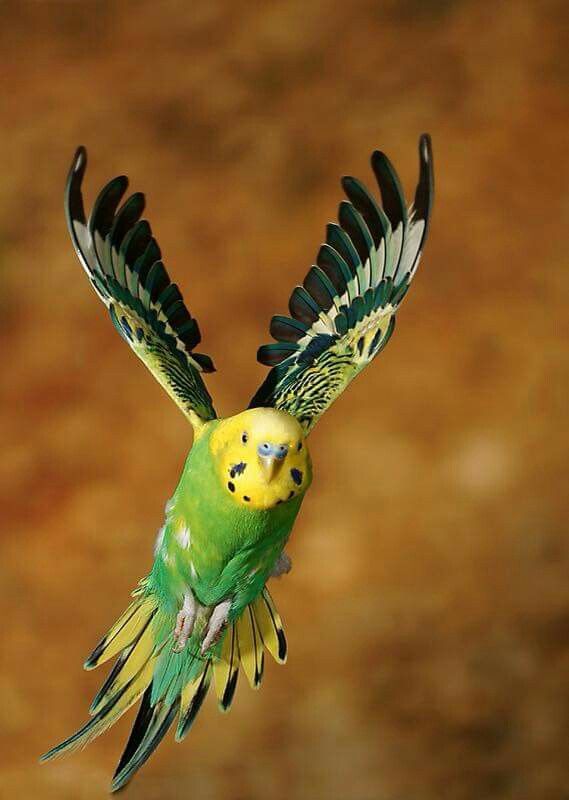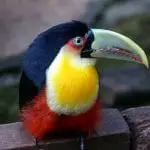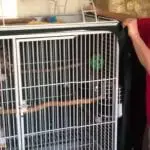Parakeets were made to fly, but the main question is, can they fly fast? The entire body of the parakeet is designed to do the task of flying to explore. The different activities that they make, such as self preening, cleaning their feathers, and exercising points out to their main activity which is flying. As an owner, you may need to let your bird explore its capabilities even they are know staying in the cage.
How Does a Parakeet Fly?
When parakeets fly, they tuck their feet and position their feathers in an arch position. Pushing down their wings will give them balance to lift themselves. They have the ability to fly in different motions, whether sideways, in an angle, or even backward. The way how their feathers are positioned helps them to control the direction that they will go through.
How Fast Does a Parakeet Fly?
There are different factors that determine the speed of your parakeet in flying; it could be the condition of its feathers, its overall bodily weight, its health, or if they are flight trained. If they are in the wild, there are high chances that they’ll be able to fly faster and in higher ranges since they practiced to do it every day. However, it is a challenge for parakeets that are in captivity especially those who are not fully trained to fly or those who are not giving time out of their cage often.
If your parakeet is used to fly in their cage, there is a tendency that they will only fly just within the range of their cage even though they are already outside that is why if you want them to learn the proper way how they should naturally fly, you must train them and give them time out of their cage for at least an hour a day.
What are the Types of Parakeet’s Fly

The parakeets are capable of doing two distinct flight speeds, which are quick and slow flights. This ability is the same as other flying insects and bees. These two types of flights are gradually used to change navigation. If the parakeet makes it difficult for it to fly in a certain place, it will just fly slowly. If the bird knows the place very well, and it is conditioned to fly, they tend to fly quickly.
Can You Teach Your Parakeet to Fly?

If the parakeet is taken into captivity before it officially starts to fly, you may need to teach them commands for you to have control over your bird. Flying is a form of exercise; that is why it is an important activity to make them healthy and fit if they don’t have an exercise, they will be prone to overweight and obesity, and they won’t be able to enhance their flying capabilities.
Training your parakeet to do something is a satisfying interaction between you and your parakeet because it also serves as your alone time with your bird. Teaching them to fly entails great patience. There are two commands that you may start teaching your parakeets so that they can practice their flying ability.
a. Fly to your hand
This is a flying technique where the and will stay in a perch while you stand a short distance from its cage while your hands in an outstretched position acting as a perch. Your goal is to encourage your bird to fly into your hand. To make the process easier, you may call their name, or you may use welcoming words such as “come.” You may also use treats, so there is a higher chance that they’ll fly towards you.
Make no mistake. Some birds just like to sit pretty
b. Fly back to perch
Once your bird successfully flies into your hand, you may need to encourage it to fly back into their cage. You may do it by taping the perch with your other hand and making sure that they are attentive to you while doing it. When the parakeet flies back to the perch, you may give them a reward after so that the next time that you will have an exercise, they’ll be more excited to fly back into their perch.
Types of Parakeets Feathers

There are three types of parakeet feathers that greatly affect and determine the way how a parakeet fly. These different kinds of feathers have their own uses that your parakeet benefits.
- Covert Feathers
This is a row of feathers located just beneath the flight feathers. Even though this is just a small feather, it is useful in helping the parakeet glide in any direction and for them to land safely. This type of feathers shouldn’t be trimmed because you may inflict pain on your bird.
- Blood Feathers
This type of feather looks like quills. This is described as the flight feathers that are still in the developing stage still and haven’t matured. As the name implies, these feathers have a brownish-red shaft that runs down in the center part of the feathers; this shaft is actual blood, so trimming it down is a no-no.
Your bird may feel intense pain if their blood feathers were accidentally trimmed down. These feathers molt, and before the actual molt, you’ll notice that the shaft’s color turns clear, an indication that there is no blood that runs through it; that is why it is needed to be replaced.
- Flight Feathers
The flight feathers are the longest feather when the blood feathers mature; it will turn into the flight feathers. These feathers make it possible for the parakeet to fly upwards and for them to establish the right speed for them to fly. This type of feather needs to be trimmed to help them have a smooth flight and for it to return to their cage easily.
You need to take extra precautions in trimming down your parakeet’s flight feathers because just a mistake might injure your parakeet and be sure that before trimming their flight feathers, they should already know how to fly so it wouldn’t be difficult for them to take off and land safely.
Facts About the Parakeets Feathers
- The parakeets have small feathers, it may not be their means of flying, but it is helpful to keep then warm.
- They show you how to be strong and healthy by means of taking good care of their feathers. They know how to self groom by means of pruning it and making their bath time they’re favorite. Taking good care of their feathers is a way for them to escape from their predators.
- Most parakeets have yellow-colored feathers that are enriched with fluorescent pigment that allows them to attract the opposite sex, most especially during the breeding season.
- The parakeets are covered in over 3,000 feathers.
Final Thoughts
Parakeets can fly fast, depending on its flying capabilities. It is a trained behavior even if they are in the wild. When they are taken into captivity, it will be your responsibility as an owner to help them practice and somehow master the skills of flying. They may not be considered excellent when it comes to their flying skills, but they were made to do it.



